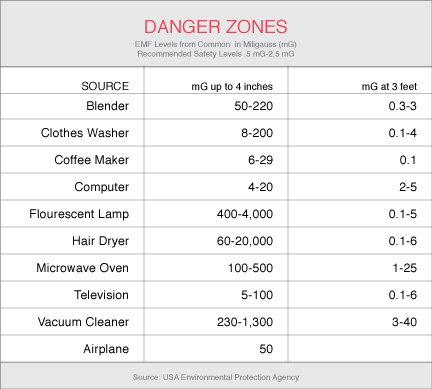 EMFs in the Home - Safe Space Protection
EMFs in the Home - Safe Space ProtectionElectromagnetic fields and public health Navigation of the section Exposure to extremely low frequency fields BackgroundJune 2007 The use of electricity has become an integral part of everyday life. Whenever electricity flows, both electric and magnetic fields exist near the lines that transport electricity, and near the appliances. Since the end of the 1970s, questions have been raised as to whether exposure to these very low-frequency electric and magnetic fields (ELF) has adversely affected health. Since then, many investigations have been conducted, successfully resolving important issues and reducing the approach of future research. In 1996, the World Health Organization (WHO) established the International Project of Electromagnetic Fields to investigate possible health risks associated with technologies that emit EMF. A WHO Working Group recently concluded a review of the health implications of the ELF (WHO, 2007). This fact The leaf is based on the findings of that Working Group and updates recent reviews on the health effects of the ELF EMF published in 2002 by the International Agency for Research on Cancer (IARC), established under the auspices of WHO, and by the International Commission on the Protection of Non-Ionizing Radiation (ICNIRP) in 2003. ELF field sources and residential exhibitionsThere are electric and magnetic fields where there are electric current flows - in electrical lines and cables, residential wiring and appliances. The electric fields arise from the electrical loads, are measured in volts per metre (V/m) and are protected by common materials such as wood and metal. Magnetic fields arise from the motion of electrical loads (i.e. a current), are expressed in tesla (T), or more commonly in militesla (mT) or microtesla (μT). In some countries, another unit called the gauss (G), is commonly used (10.000 G = 1 T). These fields are not protected by most common materials, and they easily pass through them. Both types of fields are stronger near the source and decrease with distance. Most of the electrical energy works at a frequency of 50 or 60 cycles per second, or hertz (Hz). Near certain devices, magnetic field values can be of the order of a few hundred microtesla. Lower power lines, magnetic fields can be about 20 μT and electric fields can be several thousand volts per metre. However, the average residential frequency magnetic fields in households are much lower - about 0.07 μT in Europe and 0.11 μT in North America. The average values of the electric field at home are up to several dozen volts per metre. Task Force Assessment In October 2005, WHO convened a working group of scientific experts to assess any health risks that may exist from exposure to ELF electric and magnetic fields in the range of frequencies from 0 to 100,000 Hz (100 kHz). While the IARC examined cancer testing in 2002, this Working Group examined tests for various health effects and updated cancer testing. The conclusions and recommendations of the Working Group are presented in a monograph of the WHO environmental health criteria (WHO, 2007). Following a standard health risk assessment process, the Working Group concluded that there were no substantive health problems related to the ELF electrical spheres at levels generally found by members of the public. Thus, the rest of this data sheet predominantly addresses the effects of exposure to ELF magnetic fields. There are established biological effects of acute exposure at high levels (very above 100 μT) that are explained by recognized biophysical mechanisms. External ELF magnetic fields induce electric and current fields in the body that, with very high field forces, cause nervous and muscular stimulation and changes in the excitability of nerve cells in the central nervous system. Much of the scientific research that examines the long-term risks of ELF magnetic field exposure has focused on childhood leukemia. In 2002, IARC published a monograph by classifying ELF magnetic fields as "possibly carcinogens for humans." This classification is used to denote an agent for which there are limited evidence of carcinogenicity in humans and less than sufficient evidence for carcinogenicity in experimental animals (other examples include coffee vapors and welding). This classification was based on combined analysis of epidemiological studies that showed a consistent pattern of a double increase in childhood leukemia associated with the average exposure to the magnetic field of residential power frequency greater than 0.3 to 0.4 μT. The Working Group concluded that additional studies since then did not alter the status of this classification. However, epidemiological evidence is weakened by methodological problems, such as possible selection bias. Furthermore, there are no accepted biophysical mechanisms to suggest that low-level exposures involve in the development of cancer. Thus, if there were effects of exposure to these low-level fields, it would have to be through a biological mechanism that is not yet known. In addition, animal studies have been largely negative. Thus, in balance, tests related to childhood leukemia are not strong enough to be considered causal. Infant leukemia is a comparatively rare disease, with a total annual number of new cases estimated at 49,000 worldwide in 2000. Average magnetic field exposures above 0.3 μT in households are rare: it is estimated that only 1% to 4% of children live in such conditions. If the association between magnetic fields and infant leukemia is causal, it is estimated that the number of cases worldwide that can be attributed to magnetic field exposure ranges from 100 to 2400 cases per year, based on values for the year 2000, which represent 0.2 to 4.95 per cent of the total incidence for that year. Thus, if ELF magnetic fields increase the risk of the disease, when considered in a global context, the impact on the public health of the ELF EMF exposure would be limited. Several other adverse health effects have been studied for the possible association with ELF magnetic field exposure. These include other childhood cancers, adult cancers, depression, suicide, cardiovascular disorders, reproductive dysfunction, development disorders, immune modifications, neurobehavioural effects, and neurodegenerative diseases. The WHO Working Group concluded that the scientific evidence supporting an association between exposure to the ELF magnetic field and all these health effects is much weaker than childhood leukemia. In some cases (i.e. cardiovascular disease or breast cancer) evidence suggests that these fields do not cause them. International Exposure GuidelinesTreat health effects related to short-term and high-level exposure have been established and constitute the basis for two international guidelines on the exposure limit (ICNIRP, 1998; IEEE, 2002). At present, these bodies consider insufficient scientific evidence related to the possible effects of long-term and low-level exposure on the ELF fields to justify the reduction of these quantitative exposure limits. WHO Guide For short-term high-level exposures to EMF, health adverse effects have been scientifically established (ICNIRP, 2003). The international exposure guidelines for the protection of workers and the public of these effects should be adopted by policymakers. EMF protection programs should include exposure measurements from sources where exposures can be expected to exceed limit values. As for the long-term effects, given the weakness of evidence of a link between exposure to the ELF magnetic fields and childhood leukemia, the benefits of reducing health exposure are not clear. In view of this situation, the following recommendations are made: More WHO - World Health Organization. Extremely low frequency fields. Environmental Health Criteria, Vol. 238. Geneva, World Health Organization, 2007.IARC Working Group on Carcinogenic Risk Assessment for Humans. Non-ionizing radiation, Part 1: High frequency and extremely low electrical and magnetic fields. Lyon, IARC, 2002 ICNIRP - International Commission for the Protection of Non-Ionizing Radiation. Exposure to static and low-frequency electromagnetic fields, biological effects and health consequences (0-100 kHz). Bernhardt JH et al., eds. Oberschleissheim, International Commission for the Protection of Non-Session Radiation, 2003 (ICNIRP 13/2003). ICNIRP – International Commission for the Protection of Non-Ionizing Radiation (1998). Guidelines to limit exposure to electrical, magnetic and electromagnetic fields (up to 300 GHz). Health Physics 74(4), 494-522.IEEE Standard Coordination Committee 28. IEEE Standard for safety levels regarding human exposure to electromagnetic fields, 0-3 kHz. New York, NY, IEEE - Instituto de Ingenieros Eléctricos y Electrónicos, 2002 (IEEE Std C95.6-2002). WHO Media centreTelephone: +41 22 791 2222E-mail:
Accessibility links Search results Powerline EMF: Data sheet on magnetic fields - EMFWiseAre 50/60 Magnetic fields Hz carcinogens - EMF & HealthELECTRIC AND MAGNETIC FIELDS AND Your HEALTH Electrical and magnetic fields TENED TranspowerUseful Information About Electro Magnetic Fields :: Dr. Rima... Electrical and magnetic fields: sources and exhibition - GOV. United KingdomMagnetic field - WikipediaInfluence of Electric, Magnetic, and Electromagnetic Fields on ...Magnetic fields (HSG 27, 1989) - IPCS InchemEMFs in the Home - Safe Space Protection Navigation1 Foot links
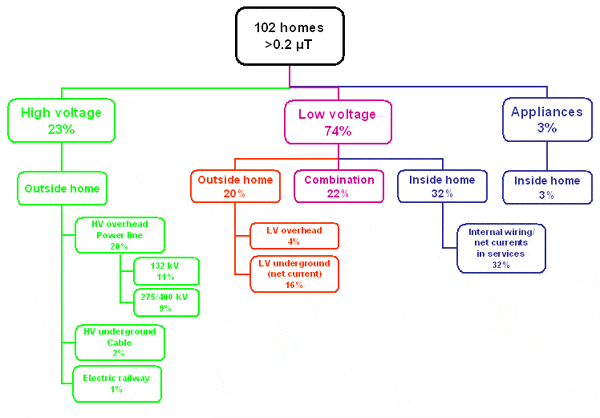
Fields greater than 0.2 or 0.4 µT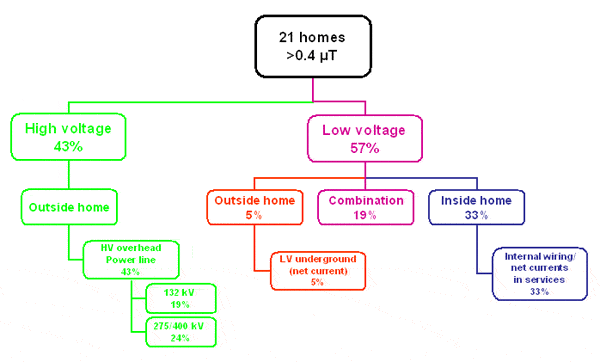
Fields greater than 0.2 or 0.4 µT
EMFs in the Home - Safe Space Protection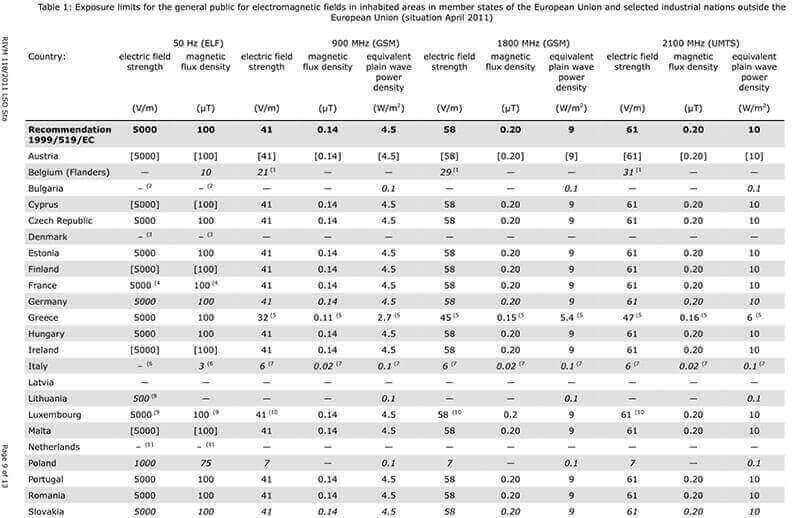
Is EMF Exposure Really a Big Deal? | Wellness Mama![MicroTesla EMF Meter [omtmt] : Altered States!, Informing The World MicroTesla EMF Meter [omtmt] : Altered States!, Informing The World](https://altered-states.net/barry/newsletter771/laptop-heat-on-body.jpg)
MicroTesla EMF Meter [omtmt] : Altered States!, Informing The World
Get in charge of electromagnetic fields « Healthy Pixels
Get in charge of electromagnetic fields « Healthy Pixels
Health & Safety
How to Measure EMF
EMF levels of Apple devices - Macintosh How To
Units For Measuring EMF Radiation - With Interactive Converter
Electromagnetic Fields & EMF Detectors – Anomalies Research Society
What Are Safe Levels of Electromagnetic Radiation? | DefenderShield
What is EMF and How to Test EMF using a Gauss Meter - Green Living Ideas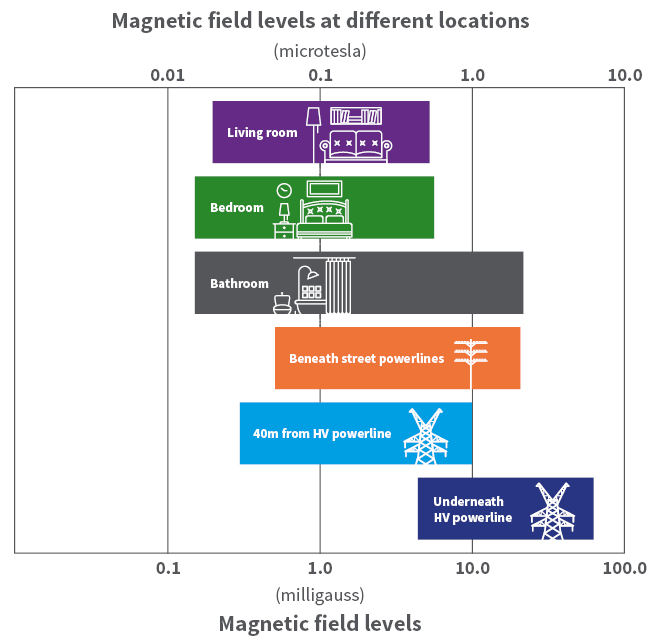
Electricity and health | ARPANSA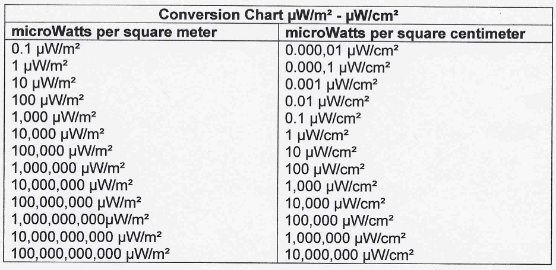
EMF and EMR Conversion Formulas and Tables. RF and magnetic fields.
Microtesla safe level
Toyota EMF Pius Hybrid
EMF and EMR Conversion Formulas and Tables. RF and magnetic fields.
EMF, RF, Magnetic Field, Radiation & Sound / Noise Safety Levels 2 | EMF - Biomedical Implant EMI Surveys- Indoor Air Quality Testing - Radon - Radiation Surveys: 214.912.4691 Dallas Fort Worth Austin Houston San Antonio
Get in charge of electromagnetic fields « Healthy Pixels
PDF) Health Hazards of Electromagnetic Radiation
Health Hazards of Electromagnetic Radiation
The Truth about EMF and Infrared Saunas » Sunlighten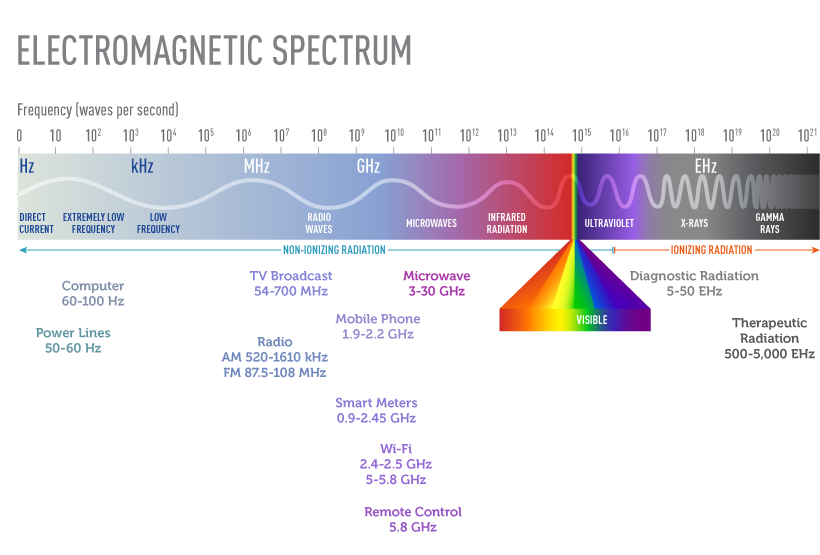
Electromagnetic Fields and Cancer - National Cancer Institute
What is EMF (Electromagnetic Fields) 101 – By EMF & RF Solutions | EMF & RF Testing | Mitigation | Shielding Experts
EMF, RF, Magnetic Field, Radiation & Sound / Noise Safety Levels 2 | EMF - Biomedical Implant EMI Surveys- Indoor Air Quality Testing - Radon - Radiation Surveys: 214.912.4691 Dallas Fort Worth Austin Houston San Antonio
Leak links power lines to cancer | New Scientist
Examples from Misleading EMF Reports - hightechhealth.com
Potential effects of electromagnetic fields in the Dutch North Sea
Japan EMF Information Center
How To Measure EMFs - A Practical Guide - EMF Academy
Apple AirPods and EMF - how bad are they? - Macintosh How To
EMF
EMF Safety Store |
BUSINESSAFFECTED?
Toyota EMF Pius Hybrid
Electromagnetic Fields - Frequently Asked Questions - EMFields Solutions
EMF Detector: 5 Best Apps For Detecting EMF's
The mitigation of electric and magnetic fields from transmission lines - EE Publishers
 EMFs in the Home - Safe Space Protection
EMFs in the Home - Safe Space Protection



![MicroTesla EMF Meter [omtmt] : Altered States!, Informing The World MicroTesla EMF Meter [omtmt] : Altered States!, Informing The World](https://altered-states.net/barry/newsletter771/laptop-heat-on-body.jpg)




















Posting Komentar untuk "safe emf levels in microtesla"